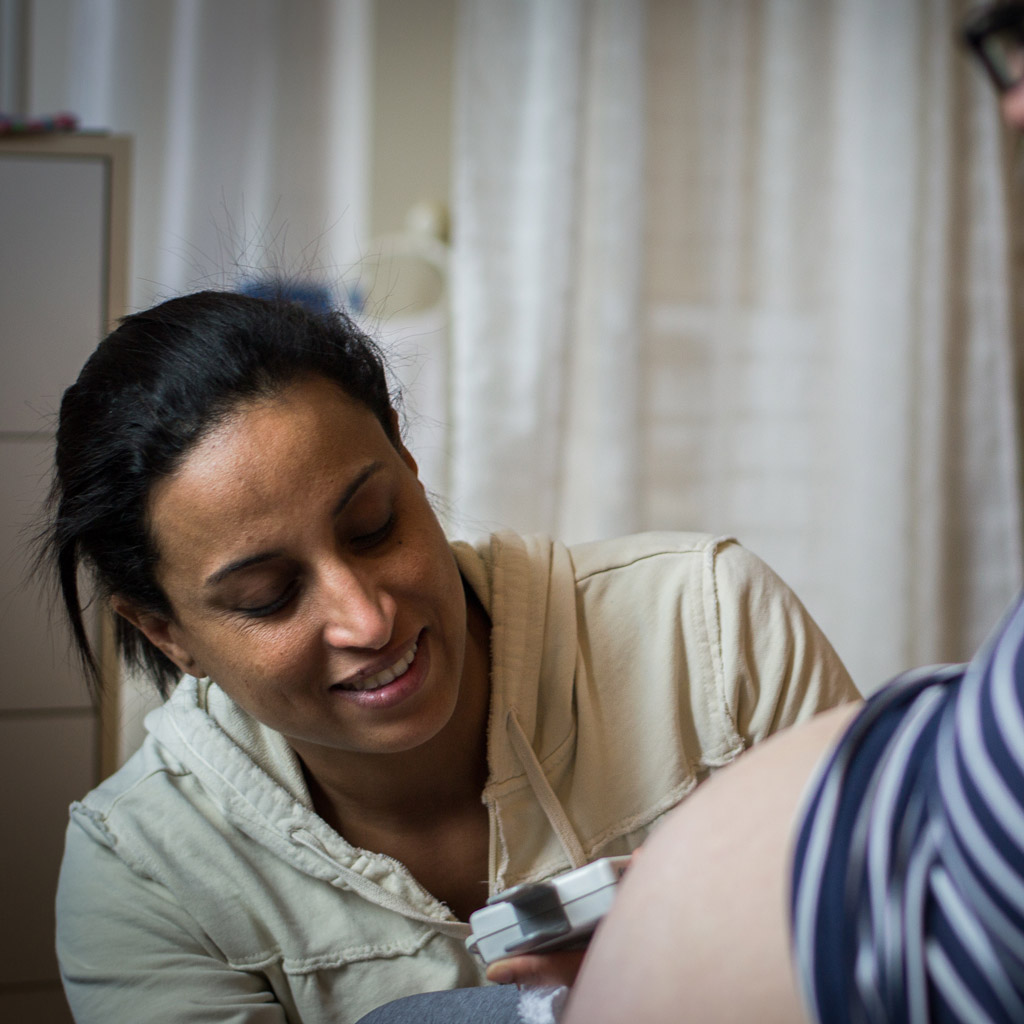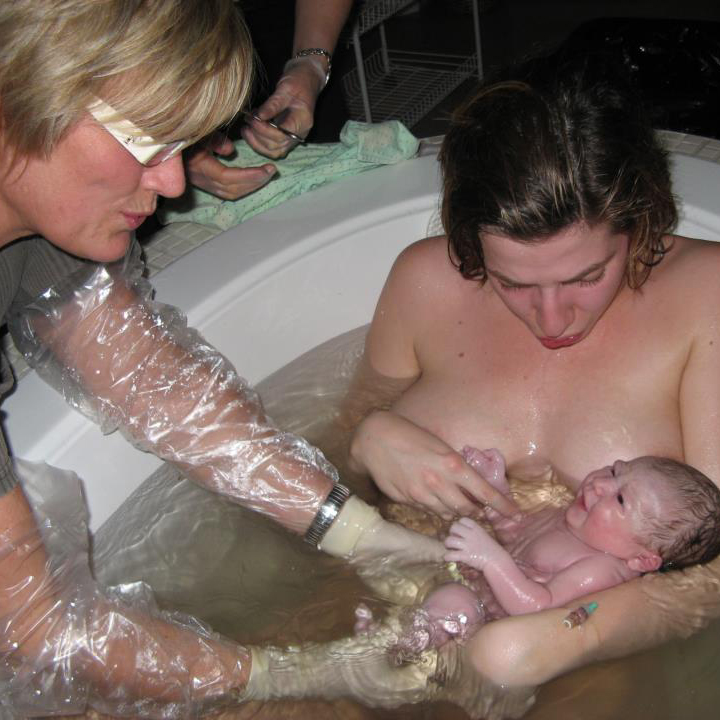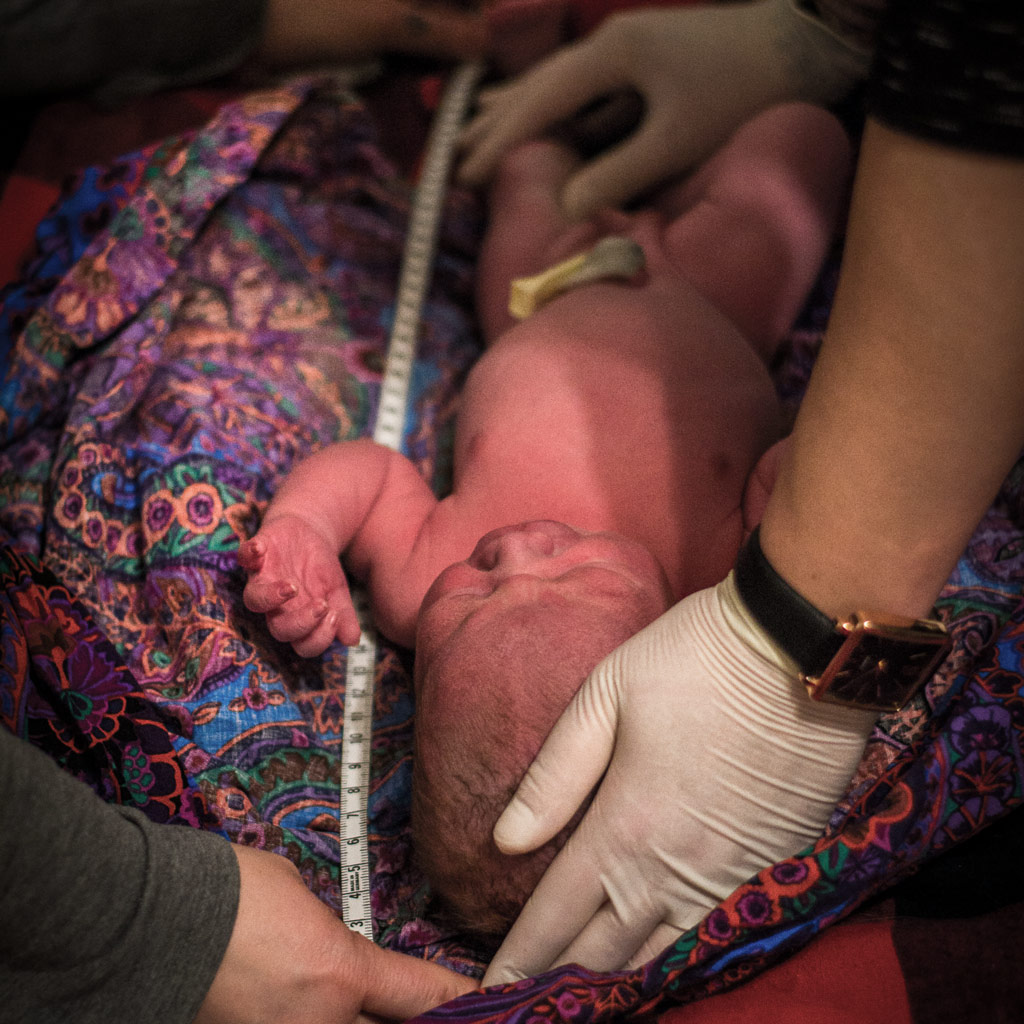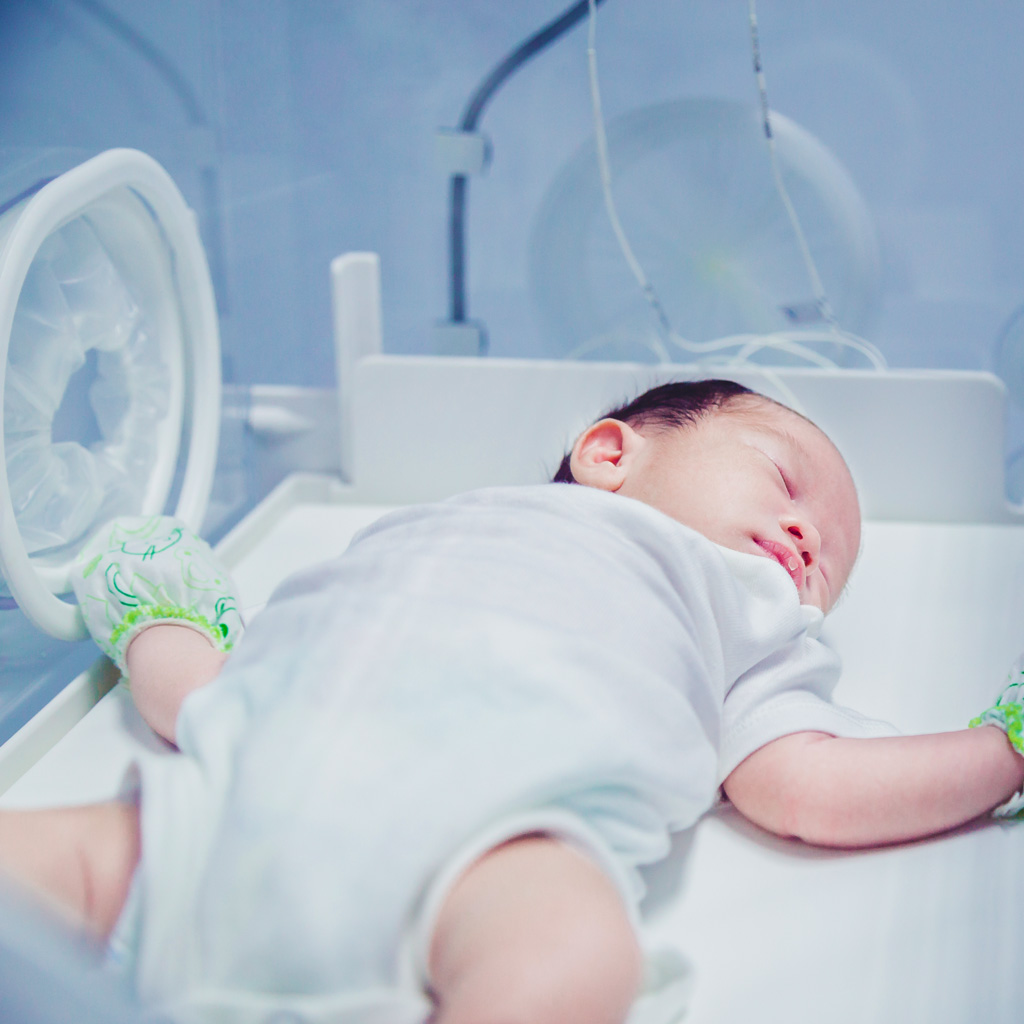The midwife is a trained and recognized health professional in perinatal care. She provides complete pregnancy care, during and after childbirth, until the 6th week after birth. She provides care for both the mother and the newborn.
Midwives are the only health professionals in Quebec to offer women the choice of birthplace. Future parents thus have the opportunity to experience this moment at home, in a birth centre or in the hospital.
The choice of birthplace
Midwives are the only professionals in Quebec who offer women the choice of birthplace.

At home

At the birth centre

At the hospital
The development of a relationship of trust
In general, the pregnant woman is followed by the same midwife throughout her pregnancy. This principle, i.e. relational continuity, is also at the heart of midwifery practice.
To monitor and respect the values and choices of the future mother, each midwife works in a team with another midwife. During care, the pregnant woman meets her midwife’s teammate to create a relationship of trust with her. The team ensures that one or the other will be available to the woman throughout the follow-up. If the labour begins at a time when the first midwife is not available, the team member is ready to assist the mother, since she knows her history.

Midwifery practice reduces risks and the number of interventions

Prenatal services
The first visit usually consists of opening the file. The midwife and the future mother take the time to get to know each other and compile the history by:
- collecting early pregnancy samples (blood, urine, Pap test, etc.);
- ordering the first ultrasound;
- performing prenatal screening, as chosen by the woman.
Thereafter, prenatal follow-up normally includes:
- monthly visits until the 32nd week;
- visits every two weeks between the 32nd and 36th week;
- weekly visits until delivery.
During each prenatal visit, the midwife assesses the progress of the pregnancy. She checks blood pressure, takes measurements, listens to the fetal heart, etc.
A human and personalized pregnancy care
Midwives believe that physical and emotional well-being are interlinked. They therefore take the time to discuss with the pregnant woman her experience and concerns.
The first visit is usually longer. Each subsequent visit lasts an average of 50 minutes. Throughout pregnancy care, the mother’s partner, as well as the children, are welcome to attend all visits.
If the future mother is planning a home birth, a prenatal visit will take place at her home between the 32nd and 36th week. This allows the midwife to become familiar with the premises and to identify the best route to get there.
Labour and delivery
During pregnancy, the midwife takes the time to discuss the signs of labour with the pregnant woman. As soon as she feels that her labour is beginning, she notifies her midwife. They decide together the best time to go to the chosen birthplace. The midwife accompanies her throughout the period of active labour. She stays with her during childbirth, as well as in the first hours of the baby’s life. In addition, a second midwife comes to assist her when the labour is more advanced.
During labour, as well as during prenatal and postnatal care, the midwife remains responsible for the woman and the baby. She makes sure everything is progressing normally. The midwife has all the medical equipment necessary to ensure the safety of the mother and the newborn. She is also trained to act in an emergency or if the situation requires a transfer to a hospital.
A gentle birth
During birth, the midwife ensures that the arrival of the baby is smooth. Parents can welcome their baby themselves if they wish. They can also cut the cord at their convenience. Usually, they choose to do this a few minutes after birth.
Midwives believe that a baby’s ideal place following birth is in the mother’s arms. Skin-to-skin contact is encouraged, especially during the first hours and weeks of life. It helps to promote adaptation, attachment and breastfeeding. The baby’s condition is also assessed at birth.


Postnatal care
The midwife accompanies the mother in the hours following the birth.
After the birth, the midwife stays on site for about three hours. She assesses the mother’s physical and general condition and performs suturing as needed. She accompanies and supports the new mother during breastfeeding.
The midwife also performs a complete physical examination of the newborn. She gives him prophylactic care, according to the parents’ choice (antibiotic ointment for the eyes, vitamin K).
In addition, she ensures that the official documents are completed correctly. She also talks with the woman to make sure she has the information and support she needs to care for herself and her child in the hours and days to come.
Visits in the days following the birth
The midwife visits the woman at her home within 24 hours of the birth. She returns there again on the third and fifth days.
During the first week, the midwife performs blood screening for the newborn, according to the parents’ choice. This makes it possible to screen for hereditary metabolic diseases.
Follow-up from the 3rd and 6th week after birth
Around the 3rd and 6th weeks after the birth, the midwife welcomes the woman at the birth centre. During these visits, the midwife assesses the physical, psychological and emotional adjustment of the mother.
Attentively, she focuses on the family’s experience and accompanies the parents in their adaptation. She answers their questions, encourages them and guides them as needed. She ensures the normal development of the newborn and always offers her support for breastfeeding.
In addition, she remains available by phone to answer questions and concerns. The follow-up is completed approximately six weeks after delivery.
Consultations and transfer to other health professionals
Midwifery practice is governed by regulations on consultations and transfers (Midwives Act).
During pregnancy, childbirth or the postnatal period, certain situations requiring medical attention may arise. In accordance with her scope of practice and the regulations governing her practice, the midwife consults or transfers the care of the woman or the newborn to another health professional: obstetrician-gynecologist, family doctor, neonatologist or pediatrician.
The midwife consults a medical team if labour begins between the 34th and 37th week, or after the 42nd week. In addition, if the progress of labour is outside of what is considered normal, certain obstetrical interventions may prove necessary (e.g. continuous monitoring, epidural, suction cups/forceps, caesarean section). If necessary, a transfer of care is made to a medical team. The majority of transfers are done primarily for pain relief or due to a lack of progress in labour.
Even if a transfer occurs, the midwife can stay with the woman. Responsibility for care, however, is now with hospital staff. Upon leaving the hospital, the midwife may resume the primary caregiver role and complete her follow-up with the new family.


